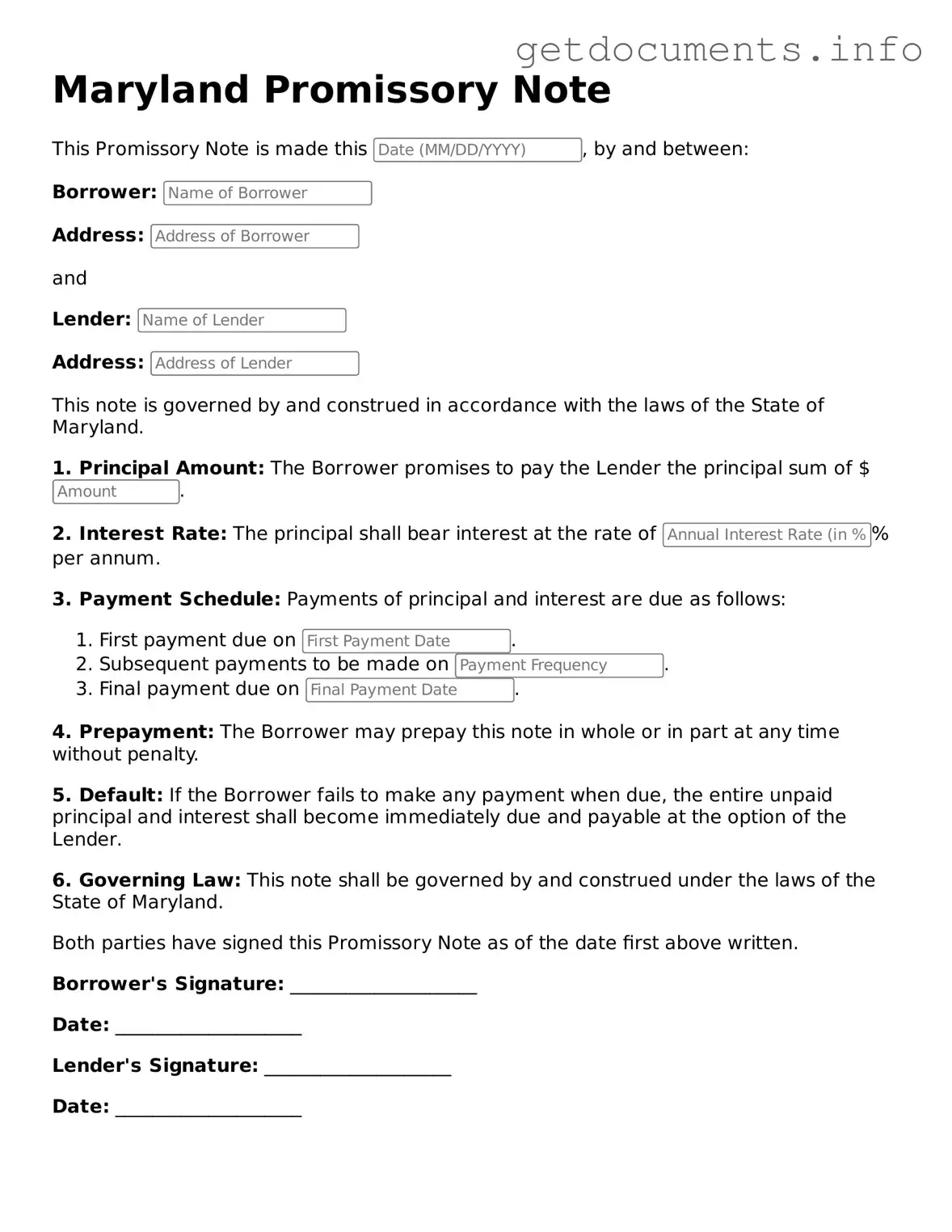Free Promissory Note Template for Maryland
A Maryland Promissory Note is a legal document that outlines a borrower's promise to repay a specified amount of money to a lender under agreed-upon terms. This form serves as a crucial tool in financial transactions, providing clarity and security for both parties involved. To begin your process, consider filling out the form by clicking the button below.
Access Promissory Note Editor
